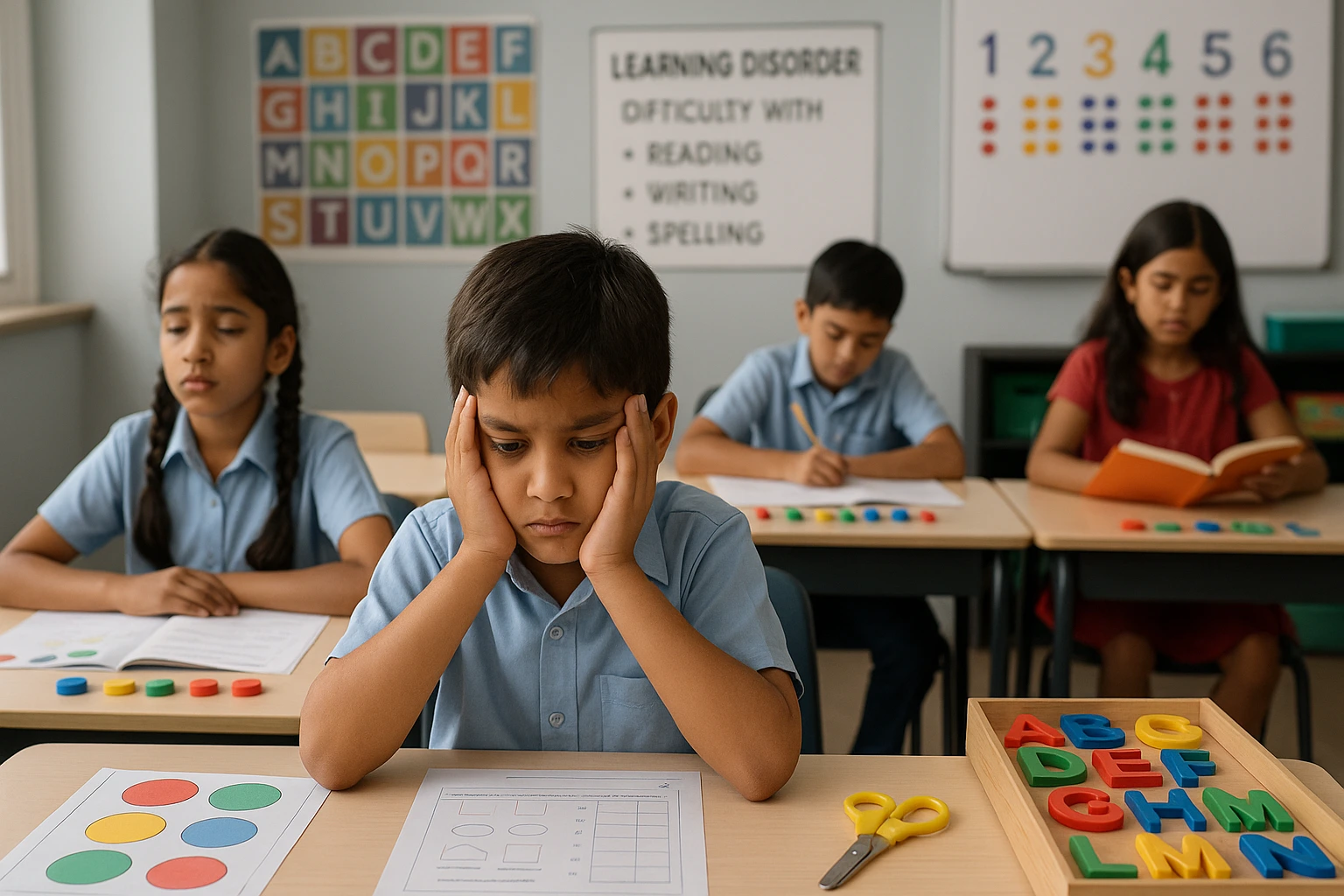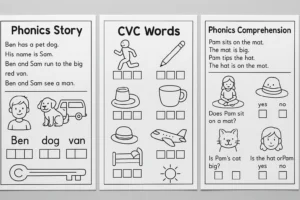
Disorders of Learning are one of the reasons that restrict the maximum engagement and participation of students in mainstream education. Disorders of Learning affect the basic learning skills of the child, such as reading, writing, and math, and they also take a toll on their social interaction skills.
Many times, the symptoms of Disorders of Learning are often mistaken for laziness, stubbornness, due to which these disorders go unnoticed at times, only to later understand that it is a grave issue.
But with the advent of Inclusive Education, students are provided the necessary academic aid in the form of clear schedules, using the latest tech software, and tailored teaching that has helped children with varied learning needs acquire education together in a regular classroom.
Why Traditional Classrooms Fail and How We Can Do Better?
Traditional classrooms have always followed a straight policy of using teaching methods that suit the average learner of the class. It is based on age-old teaching methods where the teacher does the explanation orally and uses very few teaching aids for any display. But in the modern tech world, that we are raising our children has diminished the child’s attention span even more. Therefore, using the one-size suits everyone method will not be able to cater to the learning needs of all children.
For children with special needs and Disorders of Learning, it is essential that the differentiated instruction method be followed to ensure that learning happens in a joyous manner, aligning with their learning preferences.
To download the brochure of the LD Course, Click Here!
For more details on the LD Course, Call/WhatsApp at +919321024137 / +919869866277
Why Traditional Classrooms Fall Short:
Inflexible teaching techniques
Traditional classrooms use more oral teaching methods and rote memorization methods that are extremely rigid with no scope for varied learning preferences.
Insufficient Personal Attention
Children with Disorders of Learning process information differently, so they need visual aids, sensory tools, and little breaks for their emotional meltdowns, which a traditional classroom cannot deliver successfully.
Poor skill proficiency
Special Needs children must be dealt with care and need skilled educators who can understand their challenges and provide them the desired aid. But in-service teachers are already taxed a lot and are not adequately trained to treat conditions like ADHD, dyslexia, or autism.
Focus on Uniform Outcomes
Unfortunately, the traditional classroom emphasizes only rote learning, which believes that this is a definite measure to ensure that the child has understood the topic well. Due to this, creative or non-traditional thinkers often lag.
How We Can Improve:
Varied Teaching Methods
Using multi-modal teaching strategies that stimulate the different senses of the child should be implemented in the educational plan.
Focus on the child’s strengths.
Any educational plan that is executed should be based on the child’s strengths to achieve their goals effectively.
Inclusive Learning Spaces
Learning spaces are to be designed in a manner that does not overwhelm the child and reduces the child’s stress and load.
Seminars, workshops for teachers
Train and update teachers about the latest happenings and advancements in the world of Special Education.
Incorporating a multisensorial and technology-aided teaching approach helps the traditional classroom to be moulded into an inclusive learning space that ensures every child gets a fair chance to acquire quality education in a regular classroom.

Source: jimpire
The Power of Tailored Support & Strategies
Every child is a unique individual with exclusive characteristics, including their ways of learning. So, it is impossible to expect all children to learn in one manner, which requires educators to use tailored strategies and methods that help to make a meaningful difference to their learning journey. Student studies differently, and for those with learning challenges, tailored support can make a meaningful difference.
Listed below are a few evidence-based strategies and tools:
Technology-aided learning tools
Using tech-aided tools such as voice-to-text software and text-to-speech tools helps children who face reading or writing difficulties.
Graphic Schedules
Systematic and clear schedules that are visually displayed for the child help them to get rid of their anxiety and focus better.
Chunking Information
Decoding complex procedures into easy, manageable steps helps children to master basic topics, which helps in learning complex topics, and easier to absorb and retain.
Using different sensorial methods
Using techniques that stimulate the senses of the child, such as touch, movement, and feel, helps them to retain the information better.
Movement-Based Seating Options
When the seating options are designed to facilitate the child’s movement around, it becomes easy for that child to move around without distracting the other children.
Allowing additional time
Giving the child Extended Time to complete their work and assessing them in a format that they are comfortable with enhances their learning outcomes.
Giving the child the desired customised aid helps to bridge any academic gaps that exist and helps the student thrive naturally.
Digital Solutions for Learning Success
The capacity for digital solutions to support students with learning challenges in achieving their goals is stronger. Educational apps, assistive technology, and software tailored to the needs of individual learners mean that students can now enjoy a more personalized, interactive learning experience. These tools cater to a range of needs: from reading difficulties, to challenges with attention, and otherwise learners get an opportunity to move ahead in their own time.
Key Digital Tools for Learning Success:
Text-to-Speech Tools
Students with reading deficiencies, for example, can really benefit from certain text-to-speech apps such as Natural Reader or Voice Dream Reader, which convert written words into voice.
Speech-to-Text Software
Using Dragon NaturallySpeaking and Google Voice Typing to help with writing for some students.
Organizational Aids
Tools like Evernote and Microsoft OneNote help students organize thoughts, notes, and assignments.
Reading Support Apps
Learning Ally and Bookshare provide access to audiobooks and digitally accessible reading material.
Focus Tools
For those with attention issues, apps like Stay Focused help students limit their time on screens and stay on task.
The tools employed by parents are able to help children with perspective and clear direction, which in turn builds on their independence, confidence, and motivation.
To help educators and parents understand and apply such strategies. These strategies provide valuable knowledge about digital interventions and how to use them effectively to support learners with special needs.

How Training Matters to Move from Awareness to Action?
Understanding learning problems is necessary, but it amounts to nothing unless such know-how culminates in action. Many educators and caretakers do want to help, but may lack the tools or training for doing so effectively. This is where structured learning and skill-building can come in.
Why Training Makes a Difference:
From Guesswork to Strategy
This is extremely difficult as, without training, there is heavy reliance on the trial-and-error method. The Learning Difficulties Course offers clear, research-based strategies that work.
Understanding the Root Cause
The course explains different types of learning difficulties like dyslexia, ADHD, and processing Disorders of Learning, helping teachers respond appropriately.
Adapting Teaching Methods
Through the Learning Difficulties Course, educators can learn to adapt lessons and assessments on an individual basis for their classroom.
Building Confidence in Support Roles
Training empowers teachers and parents to act with clarity instead of hesitation.
The Learning Difficulties Course by Vidhyanidhi Education Society (Govt. Regd.) is designed to offer practical, easy-to-apply knowledge. It equips learners with the tools to go beyond simply recognizing a problem to solving it with informed care and tailored interventions.
Support Success! Join Vidhyanidhi’s LD Course and Make Learning Easier Today!
To download the brochure of the LD Course, Click Here!
For more details on the LD Course, Call/WhatsApp at +919321024137 / +919869866277
FAQs
How can Schools Move from Awareness to Action?
Specialized Programs, Professional Development Inclusive Policies Help Schools Shift from Awareness to Action
Why is Teacher Training Important?
Training equips Educators with the Skills to recognize and support diverse Learning Needs.
What are disorders of learning?
These are reading, writing, or math processing neurological-based challenges, such as dyslexia and ADHD.



